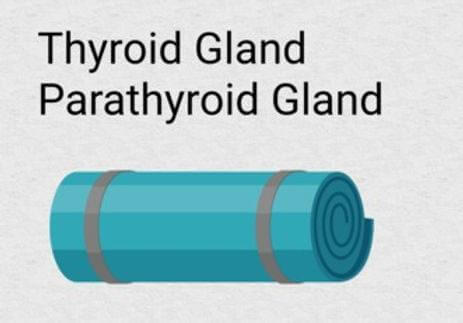Author: Randeep Singh / go to all articles on Yoga cure
Yoga for Thyroid, Problems:
Thyroid gland is a bow tie shaped gland located in the front part of the lower neck.
It has two wing, flap like lobes one on each side of the trachea which is present behind this gland. Both the lobes of the thyroid gland are connected with a bridge like structure, forming the center of the bow tie called the isthmus.
The thyroid gland secretes two hormones which regulate most of the vital functions of the body. Yoga for thyroid problems help keep these functions running at the optimal level.
These two hormones are thyroxines and triiodothyronine. Iodine is the raw material for producing these two hormones which are responsible for the proper functioning of all the vital functions of the body like the heart rate, breathing, central and peripheral nervous system, level of cholesterol in the blood, menstrual cycle in females, Strength of the muscles, Temperature of the body, and weight of the body.
95 % of the thyroid hormones is thyroxine and the remaining 5 % is triiodothyronine. The presence of these hormones in the body can go low in the sufficient amount of iodine is not available for their production. This can lead to disorders related to all the vital functions these hormones are responsible for carrying out.
The pituitary gland on instruction (Release of an hormone) from the hypothalamus produces thyroid stimulating hormone ( TSH) which directs the thyroid gland to produce the two thyroid hormones. The amount of TSH released by the pituitary gland is directly proportional to the amount of thyroid hormones that is expected to be released in the blood stream. Calcitonin is the third hormone secreted by the thyroid glands which works by reducing the level of calcium in the blood.
Goiter is a condition of thyroid gland where in the event of the absence of sufficient amount of iodine it inflates itself in an attempt to produce more thyroid hormones, the thrust to produce more thyroid hormones comes from the pituitary gland in the form of the release of more TSH in the blood as soon as it senses the dropping levels of these hormones in the bloodstream.
Hyperthyroidism is a condition where the thyroid gland goes hyperactive and produces large amounts of thyroid hormones which in turn spikes up all the related vital functions of the body the hormones are in command of. Read about how to handle hyperthyroidism with yoga here.
Parathyroid glands on the other hand are a set of four small, rice grain sized, glands which are located behind the thyroid gland, none of the functions is common between the two glands other than a section of the name; thyroid.
Parathyroid glands are the only glands in the body which have been assigned the function of regulating the amount of an element in the blood stream; calcium. No other element share this luxury of having a dedicated gland with calcium. This has a reason to it, calcium directly and indirectly influences all the vital functions vital to the sustenance of life.
Calcium is the means through which the electrical impulses travel through the nerve fibers of the nervous system. Ant deficiency of calcium in the blood can lead to diseases related to the nervous system: depression, weakness, fatigue etc. Parathyroid glands produce parathormone which acts to increase the calcium level in the blood.
Presence of calcium within the muscle act like the fuel for them to contract when needed. Muscle weakness, and cramps can result from the deficiency of calcium in the muscle cells. Lastly, the most popular usage of calcium is in strengthening the skeletal system. In fact the calcium is stored in the bones not to provide them strength but as a storehouse to be used whenever needed for the proper functioning of the nervous system and the muscles in the body.

Yoga for Thyroid problems
Yoga poses for a healthy thyroid include chin lock (a technique which presses the chin into the chest, thereby compressing the thyroid glands present in the lower neck.
This compression applies a massage to the hormone producing tissues inside the thyroid lobes which reinvigorates their functioning. Alternately when the compression so applied is released the vacuum of blood that was created during the compression sucks in nutrition (plant based nutrients and other vitamins) rich fresh blood adding to the health of the entire thyroid gland.
Deep relaxation techniques are an important part of the yoga for thyroid curriculum. One can use unique ways to relax from everyday life or use various yoga relaxation techniques. A relaxed mind and the body provide the needed break to the always on alert hypothalamus and the pituitary glands. In the absence of these breaks the efficiency of the entire endocrine system may suffer.
Yoga poses for a healthy thyroid gland help stretch the muscles situated around the gland which physically releases the held up tension in that area. Once the stress trapped in the muscles around the neck is dissipated the blood vessels leading to the thyroid glands relax and thus expand transport more blood to them. Blood being the fuel to the working of these glands, any excess of it help keep their functioning at the optimal level.
Moreover a regular practice of the exercises for thyroid control begins to make one aware of the tension that may start to encroach upon the area around the thyroid glands. The relaxation techniques meant for treating thyroid problems also help reducing the levels of the hormone cortisol in the blood, cortisol id infamous for interfering in the proper functioning of the thyroid gland.
Yoga Asanas & Pranayamas for Hyperthyroidism
Read other Informative Articles….

